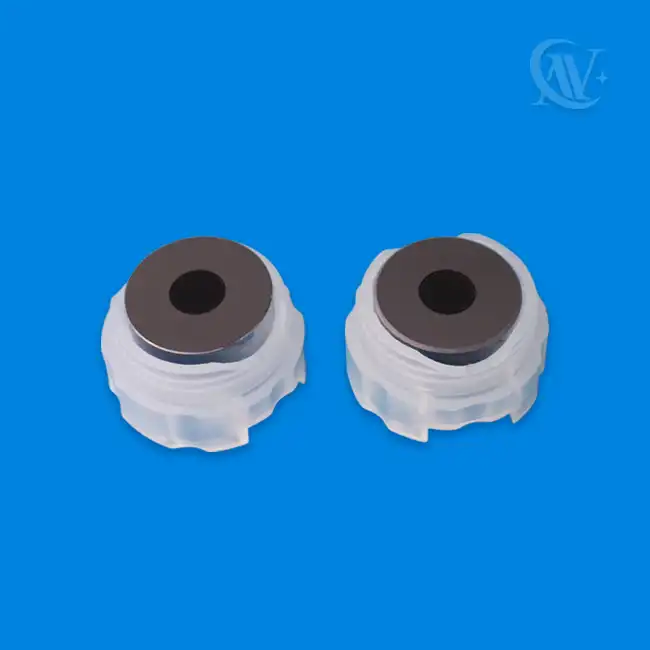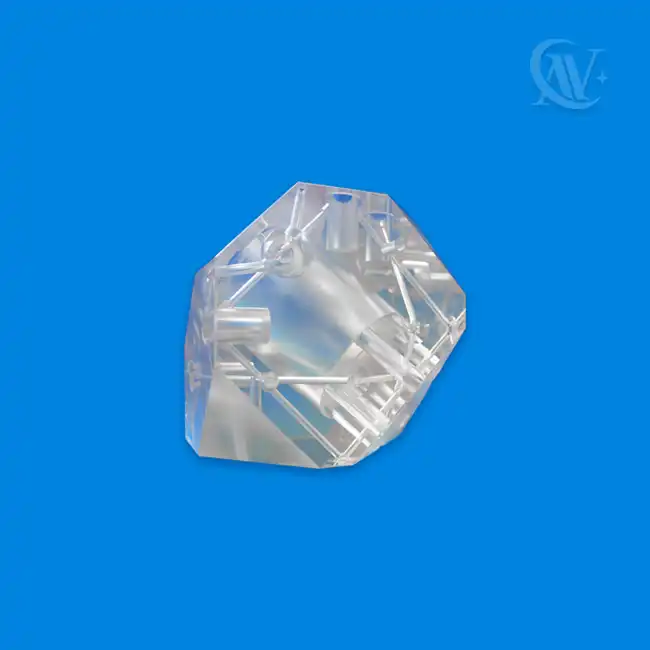Understanding the Physics Behind Optical Super Stable Cavities
In the realm of precision optics and advanced laser technologies, Optical Super Stable Cavities have emerged as a groundbreaking innovation. These remarkable devices are revolutionizing fields such as time frequency measurements, optical atomic clocks, and high-power laser systems. But what exactly are these cavities, and how do they work? Let's delve into the fascinating world of Optical Super Stable Cavities and unravel the physics that makes them so extraordinary.
The Fundamentals of Optical Super Stable Cavities
An Optical Super Stable Cavity is a sophisticated optical resonator designed to maintain exceptional stability in its resonant frequency. These cavities are typically constructed using ultra-low expansion materials and feature mirrors with incredibly high reflectivity. The core principle behind their operation lies in the ability to trap light within the cavity for extended periods, allowing for precise frequency control and measurement.
The stability of these cavities is paramount to their functionality. Factors such as temperature fluctuations, mechanical vibrations, and even minute changes in air pressure can affect the cavity's performance. To mitigate these issues, researchers employ various techniques, including:
- Active temperature stabilization systems
- Vibration isolation platforms
- Ultra-high vacuum environments
- Precision-engineered spacer materials
The combination of these elements results in a cavity that can maintain its resonant frequency with astonishing precision, often achieving stability levels on the order of 1 part in 10^16 or better. This level of stability is crucial for applications in metrology, spectroscopy, and quantum optics.
Applications and Advancements in Optical Super Stable Cavity Technology
The versatility of Optical Super Stable Cavities has led to their adoption in numerous cutting-edge applications. Some of the most notable include:
1. Time Frequency and Optical Atomic Clocks: Super stable cavities serve as the heart of modern optical atomic clocks, which are capable of measuring time with unprecedented accuracy. These clocks are so precise that they can detect relativistic time dilation effects on Earth's surface.
2. High-Power Optical Gain Cavities: In the realm of high-power lasers, stable cavities play a crucial role in enhancing beam quality and power output. They are instrumental in developing advanced laser systems for industrial, medical, and defense applications.
3. Laser Weapons and YAG Lasers: The military and defense sectors leverage the stability of these cavities to create highly focused and powerful laser beams for various applications, including missile defense systems and directed energy weapons.
4. Ultraviolet Lasers: In the field of UV laser technology, super stable cavities enable the production of coherent, high-intensity UV light for applications in photolithography, materials processing, and scientific research.
5. Laser Gyroscopes: The aerospace industry relies on super stable cavities to create highly accurate laser gyroscopes for navigation in aircraft and spacecraft.
6. Cavity Ring-Down Spectroscopy (CRDS): This ultra-sensitive spectroscopic technique utilizes super stable cavities to measure trace amounts of gases and analyze molecular structures with exceptional precision.
The continuous advancement in Optical Super Stable Cavity technology is pushing the boundaries of what's possible in these fields. Researchers are constantly working on improving cavity designs, developing novel materials, and refining manufacturing processes to achieve even greater stability and performance.
The Future of Optical Super Stable Cavities: Challenges and Opportunities
As we look to the future, the potential for Optical Super Stable Cavities continues to expand. However, with great potential comes great challenges. Some of the key areas of focus for future development include:
1. Miniaturization: There is a growing demand for compact, portable super stable cavities for use in field applications and space-based systems. Researchers are exploring novel designs and materials to reduce cavity size without compromising stability.
2. Improved Thermal Management: As cavities are pushed to even higher levels of stability, managing thermal effects becomes increasingly critical. Advanced cooling systems and thermally-compensated designs are areas of active research.
3. Integration with Quantum Systems: The intersection of super stable cavities and quantum technologies presents exciting opportunities. Researchers are exploring ways to integrate these cavities with quantum sensors and quantum computing systems to enhance their performance.
4. Enhanced Manufacturing Techniques: Achieving the ultra-smooth surfaces and precise geometries required for super stable cavities is a significant challenge. Advancements in manufacturing processes, such as ion beam figuring and atomic layer deposition, are crucial for pushing the boundaries of cavity performance.
5. Novel Materials: The search for materials with even lower thermal expansion coefficients and better mechanical properties is ongoing. Exotic materials like silicon carbide and crystalline silicon are being investigated for their potential in next-generation cavities.
The field of Optical Super Stable Cavities is at the forefront of precision optics and laser technology. As researchers continue to push the boundaries of what's possible, we can expect to see even more remarkable applications emerge in fields ranging from fundamental physics to advanced engineering.
For those interested in exploring the cutting-edge world of super-smooth precision optical devices, including Optical Super Stable Cavities, Xi'an SNP Precision Optics CO., LTD stands as a leader in the field. With state-of-the-art manufacturing facilities and a dedicated R&D team, they are at the forefront of developing and producing ultra-smooth optical devices, IBS ultra-low loss coatings, and optical special-shaped cavities.
Their advanced capabilities include:
- Precision clean optical polishing production lines
- Five-axis, four-axis, and three-axis CNC machining centers
- Comprehensive optical testing facilities
- High-precision film centers with VEECO ion sputtering coating technology
- 100-level dust-free purification laboratories
These capabilities position Xi'an SNP Precision Optics CO., LTD as a prime partner for researchers and industries seeking to leverage the power of Optical Super Stable Cavities and other advanced optical technologies.
Conclusion
The world of Optical Super Stable Cavities is a testament to human ingenuity and the relentless pursuit of precision. As we continue to unlock the potential of these remarkable devices, we open doors to new discoveries and technologies that were once thought impossible. From redefining our understanding of time to enabling next-generation laser systems, the impact of super stable cavities is truly profound.
For those eager to explore the frontiers of precision optics and contribute to the advancement of Optical Super Stable Cavity technology, the future is bright with possibilities. To learn more about cutting-edge optical solutions and how they can benefit your research or applications, don't hesitate to reach out to the experts at Xi'an SNP Precision Optics CO., LTD at xachaona@163.com. Together, we can push the boundaries of what's possible in the world of ultra-stable optics.
References
1. Ludlow, A. D., Boyd, M. M., Ye, J., Peik, E., & Schmidt, P. O. (2015). Optical atomic clocks. Reviews of Modern Physics, 87(2), 637-701.
2. Matei, D. G., Legero, T., Häfner, S., Grebing, C., Weyrich, R., Zhang, W., ... & Sterr, U. (2017). 1.5 μm lasers with sub-10 mHz linewidth. Physical Review Letters, 118(26), 263202.
3. Notcutt, M., Ma, L. S., Ye, J., & Hall, J. L. (2005). Simple and compact 1-Hz laser system via an improved mounting configuration of a reference cavity. Optics letters, 30(14), 1815-1817.
4. Kessler, T., Hagemann, C., Grebing, C., Legero, T., Sterr, U., Riehle, F., ... & Ye, J. (2012). A sub-40-mHz-linewidth laser based on a silicon single-crystal optical cavity. Nature Photonics, 6(10), 687-692.
5. Cole, G. D., Zhang, W., Martin, M. J., Ye, J., & Aspelmeyer, M. (2013). Tenfold reduction of Brownian noise in high-reflectivity optical coatings. Nature Photonics, 7(8), 644-650.
YOU MAY LIKE
 VIEW MORESuper Smooth Mirror Substrate
VIEW MORESuper Smooth Mirror Substrate_1742781528155.webp) VIEW MOREULE Super Stable Cavity-Square Cavity(can customize according to user's requirement )
VIEW MOREULE Super Stable Cavity-Square Cavity(can customize according to user's requirement ) VIEW MORED12.7 Mirror Substrate
VIEW MORED12.7 Mirror Substrate VIEW MORESingle Crystal Silicon Super Low Loss Spherical Mirror
VIEW MORESingle Crystal Silicon Super Low Loss Spherical Mirror VIEW MOREHigh Precision Glass Structure
VIEW MOREHigh Precision Glass Structure VIEW MORESuper Smooth Long Mirror
VIEW MORESuper Smooth Long Mirror VIEW MORED50*100 Optical Reference Cavity
VIEW MORED50*100 Optical Reference Cavity_1742553657333.webp) VIEW MOREFused Silica Super Stable Cavity-Circular Cavity
VIEW MOREFused Silica Super Stable Cavity-Circular Cavity



_1736302755188.webp)

